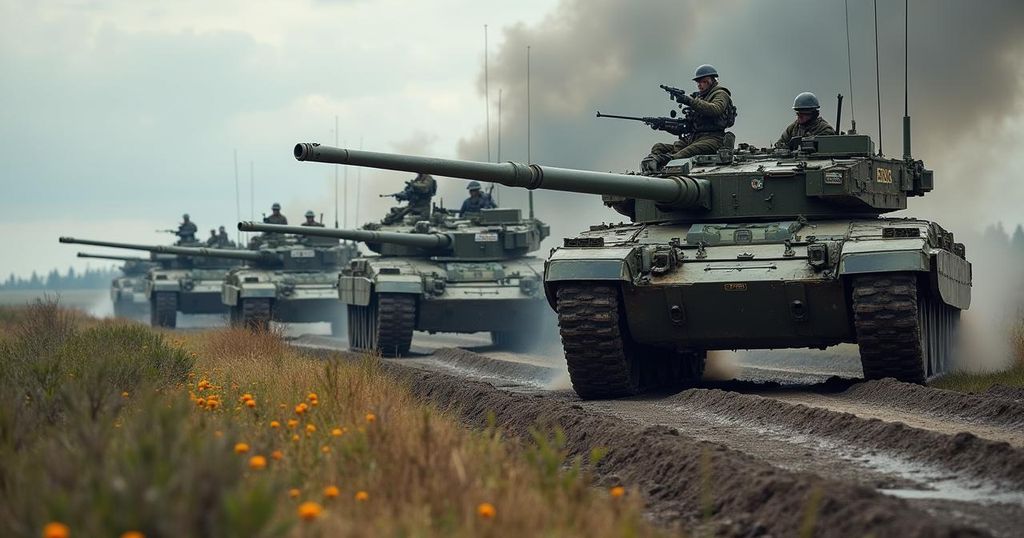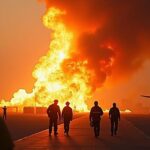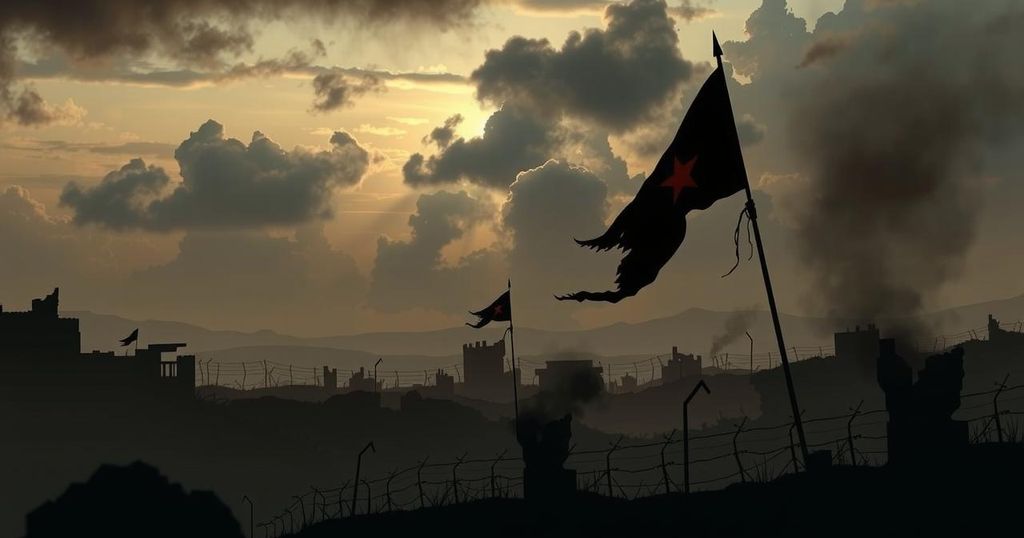Putin’s Military Limitations: An Analysis of the Ukraine-Russia Conflict
The article discusses the ongoing conflict between Ukraine and Russia, highlighting how Ukraine’s incursion has exposed weaknesses in the Russian military, which is overstretched as it struggles to cling to its offensive in Ukraine while maintaining defense capabilities. The piece elaborates on how the Russian military is resorting to desperate measures to fill gaps in manpower while emphasizing the cautious strategy pursued by Putin in response to the unprecedented situation of Ukrainian troops occupying Russian soil.
The ongoing conflict between Ukraine and Russia has now reached its third month, showing no signs of resolution. Despite numerous counteroffensives by the Russian military since Ukraine’s incursion on August 6, Ukrainian forces have successfully maintained control over approximately one thousand square kilometers within Russia’s Kursk region. This remarkable development has exposed critical vulnerabilities in the Kremlin’s military capabilities. Contrary to the common perception of the Russian armed forces as an unstoppable entity with vast resources, the reality is that President Vladimir Putin’s ambition to subjugate Ukraine has severely overextended his military, compromising its ability to safeguard Russian territory. Ukrainian President Volodymyr Zelenskyy initially hoped that the attack on Russian soil would compel Putin to reallocate troops from Ukraine for defensive purposes. However, the situation has unfolded differently; the Russian military has continued its steady advance in eastern Ukraine and captured additional towns and villages. Putin’s predicament of prioritizing the invasion of Ukraine over the defense of Russia itself underscores significant challenges within Moscow’s military strategy. Recent operations in the Kursk region have highlighted the acute manpower shortages faced by the Russian military. Reports indicate that the Kremlin has significantly increased recruitment incentives for new soldiers, with those enlisting often possessing poor health and an escalated average age. Further evidence of desperate measures includes sailors from the Admiral Kuznetsov aircraft carrier being repurposed as ground infantry and the enactment of laws to facilitate the enlistment of prisoners to bolster troop numbers. As Ukrainian forces traversed into the Kursk region, they encountered primarily young conscripts in defensive positions, resulting in rapid surrenders and enabling Ukraine to execute prisoner exchanges, a move that has generated unease among the Russian populace. Putin has exhibited a notably restrained response to Ukraine’s activities in Kursk, which suggests an acknowledgment of his military’s deficiencies. Rather than escalating rhetoric or rallying nationalistic sentiments, he has opted for a muted approach, directing state media to downplay the incursion and normalize the presence of Ukrainian troops within Russian borders. Despite these strains, it is crucial to note that Russia’s military is not on the verge of collapse. Indeed, Putin has announced plans to expand the military to a size of one and a half million, second only to China’s, and could initiate further mobilizations. However, such actions could also provoke societal unrest, pushing many young Russians to flee as protests against conscription rise. Putin’s need for a substantial troop increase is imperative as he aims to compensate for severe casualties while striving to exhaust Ukrainian resources in a war of attrition. American intelligence reports have classified September 2024 as one of the most devastating months for Russian troops, in terms of losses, yet it also marked territorial gains. With Russian forces currently outnumbering and outgunning Ukraine, the Kremlin appears to be banking on its greater resilience against sustained losses. Ukrainian leaders seem acutely aware of this precarious balance and have risked a counteroffensive partly to avoid a protracted conflict that would undeniably favor their larger adversary. While not all support the strategy of engaging Russian territory, seeing it as a reckless move, the operations have undeniably disrupted the narrative of an impending Russian victory and illustrated the vulnerabilities within Putin’s stretched military apparatus.
The context of this article centers on the evolving dynamics of the conflict between Ukraine and Russia, particularly following Ukraine’s incursion into Russian territory. As the military engagement continues, the analysis focuses on how Ukraine’s actions are reshaping perceptions of Russian military capabilities and reliability. The article addresses the critical overextension of Russian military forces, the strategic implications for both nations, and the societal challenges surrounding conscription and defense.
In summary, the protracted conflict between Ukraine and Russia reveals significant vulnerabilities in the Russian military, particularly highlighted by Ukraine’s recent incursions. Putin’s inability to effectively respond to these developments showcases the pressures and limitations imposed on his armed forces, resulting in a reliance on less conventional recruitment strategies. As the war continues, the strategic calculations on both sides remain crucial and complex, shaping future engagements.
Original Source: www.atlanticcouncil.org








Post Comment